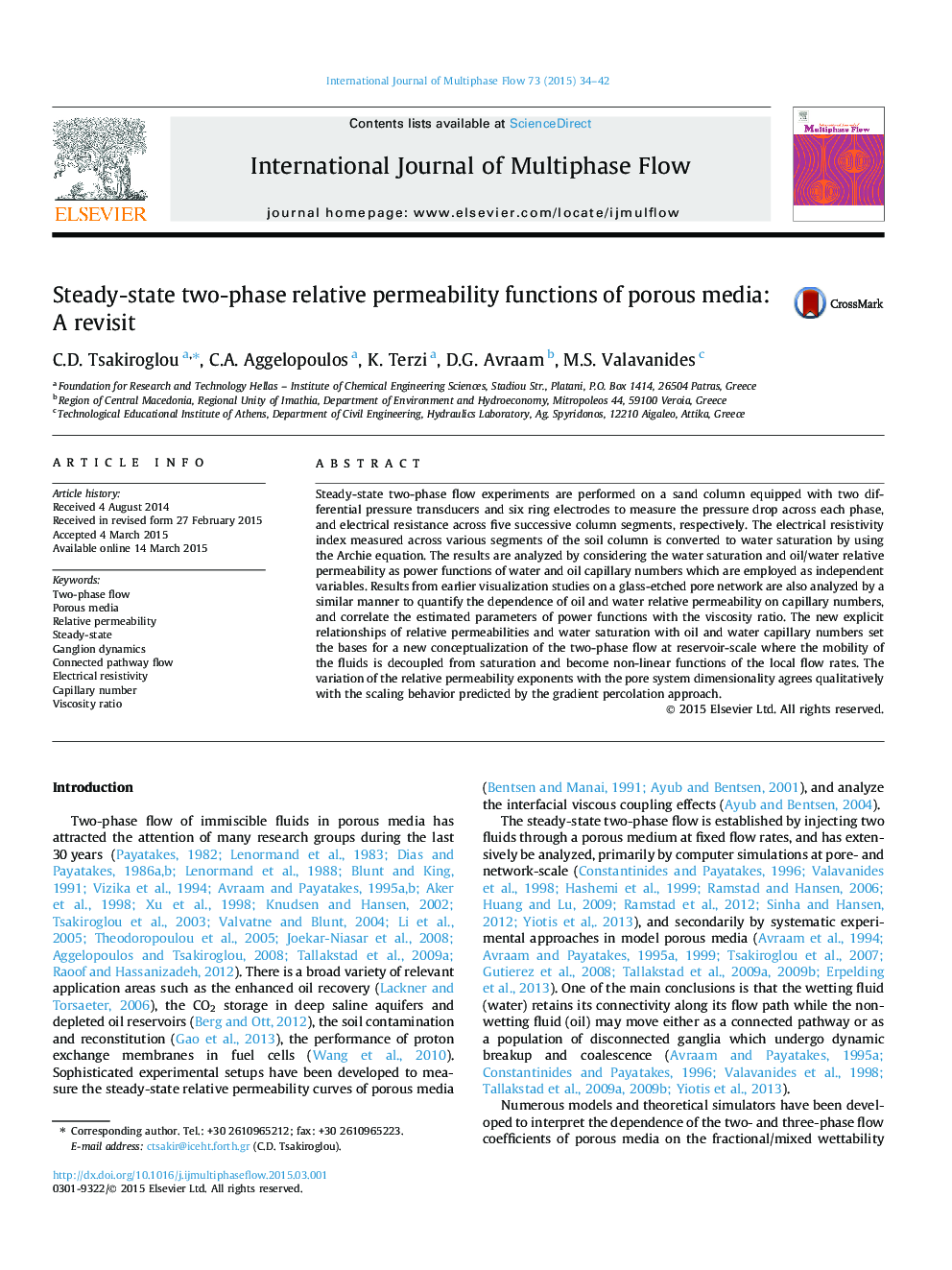| Article ID | Journal | Published Year | Pages | File Type |
|---|---|---|---|---|
| 666612 | International Journal of Multiphase Flow | 2015 | 9 Pages |
•Electrical resistivity is used to analyze steady-state 2-phase flow in porous media.•Sw and krw, kro can be fitted to power functions of Caw, Cao for 2-D and 3-D media.•The krw(Sw), kro(Sw) functions are obtained implicitly from the power laws.•The estimated values of exponents are consistent with the 2-phase flow regimes.
Steady-state two-phase flow experiments are performed on a sand column equipped with two differential pressure transducers and six ring electrodes to measure the pressure drop across each phase, and electrical resistance across five successive column segments, respectively. The electrical resistivity index measured across various segments of the soil column is converted to water saturation by using the Archie equation. The results are analyzed by considering the water saturation and oil/water relative permeability as power functions of water and oil capillary numbers which are employed as independent variables. Results from earlier visualization studies on a glass-etched pore network are also analyzed by a similar manner to quantify the dependence of oil and water relative permeability on capillary numbers, and correlate the estimated parameters of power functions with the viscosity ratio. The new explicit relationships of relative permeabilities and water saturation with oil and water capillary numbers set the bases for a new conceptualization of the two-phase flow at reservoir-scale where the mobility of the fluids is decoupled from saturation and become non-linear functions of the local flow rates. The variation of the relative permeability exponents with the pore system dimensionality agrees qualitatively with the scaling behavior predicted by the gradient percolation approach.
